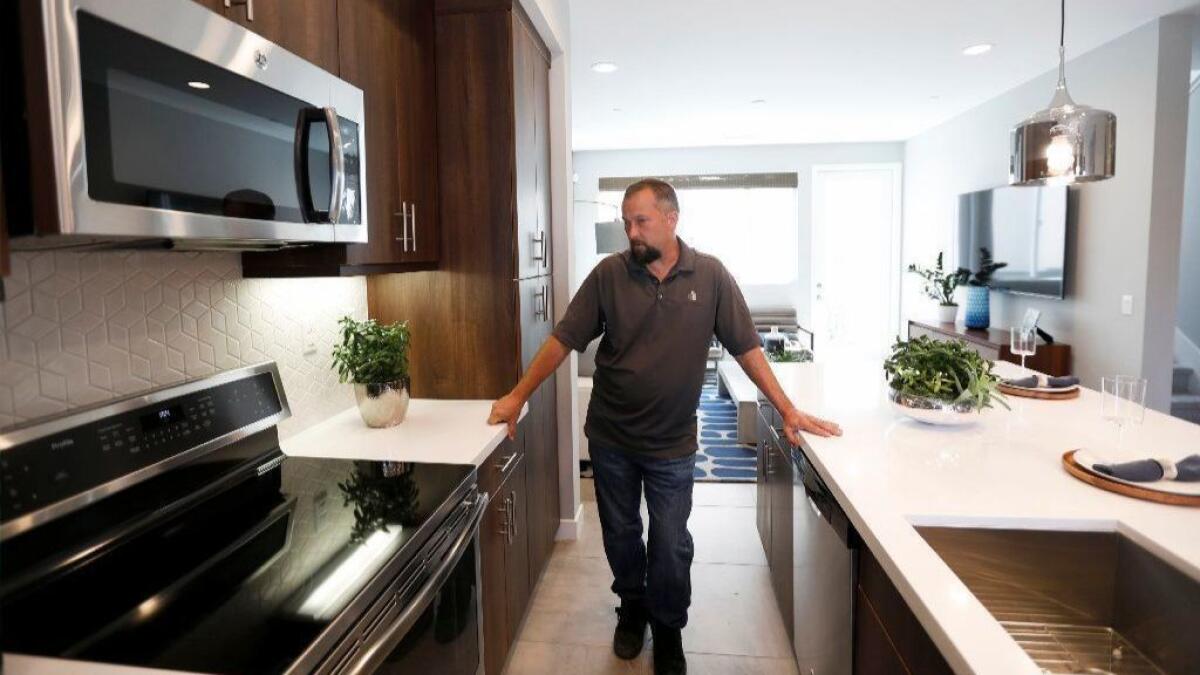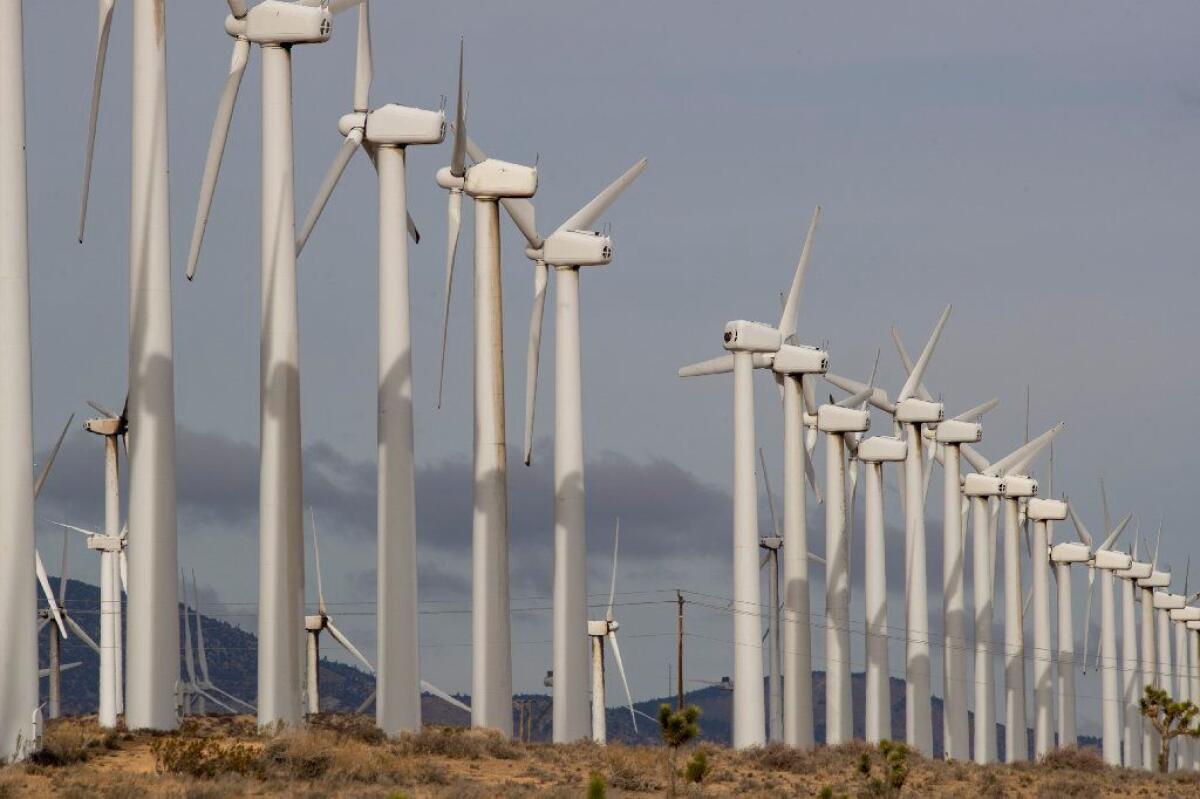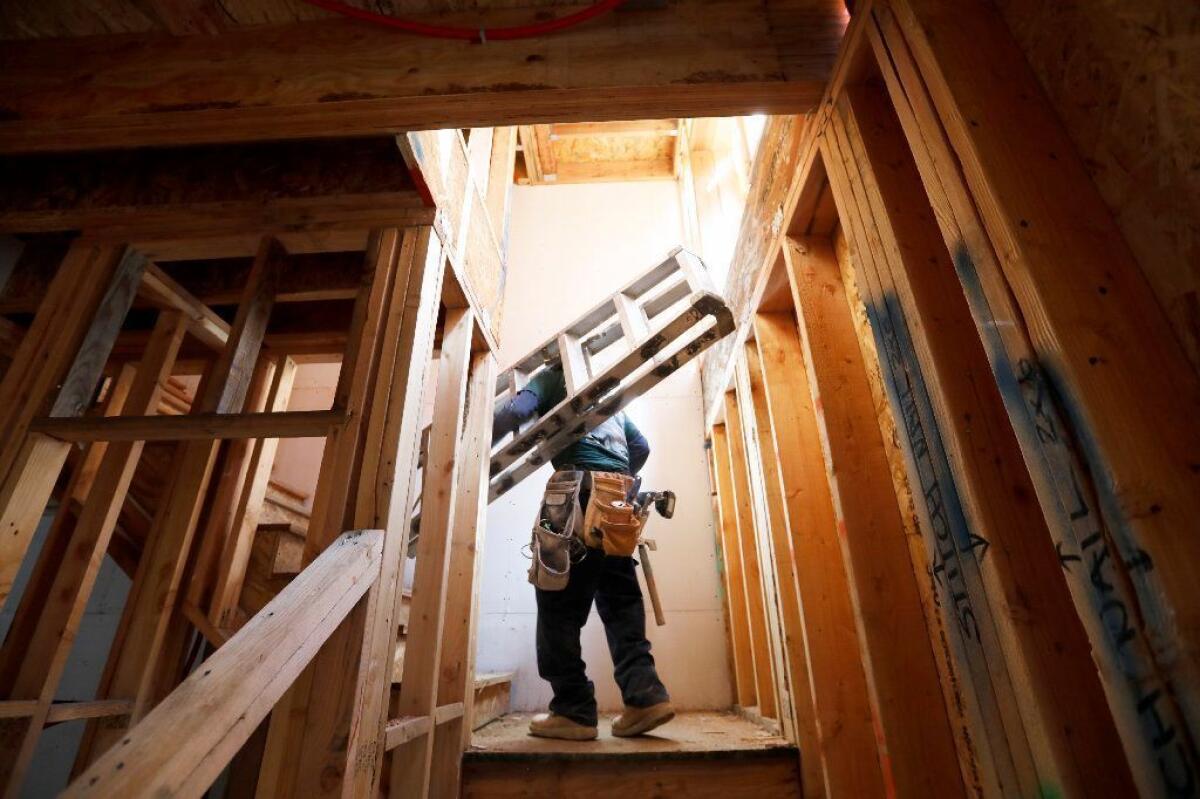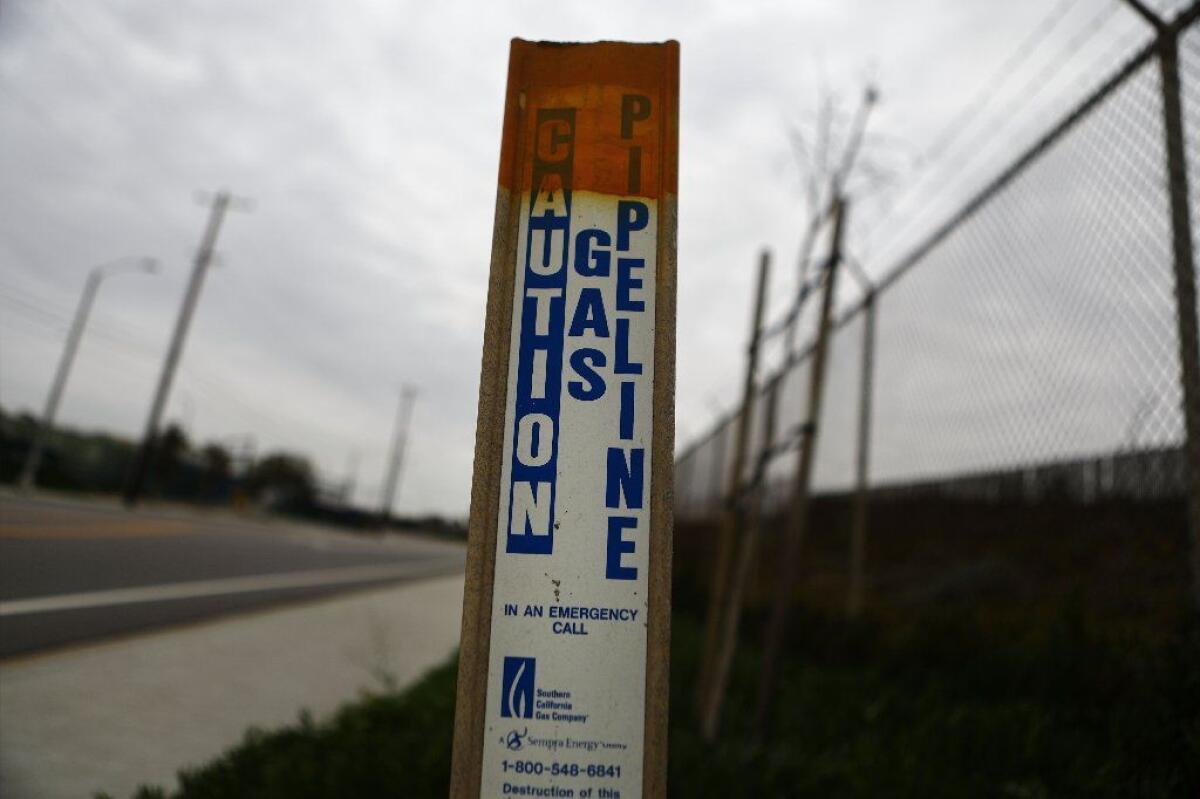California’s next frontier in fighting climate change: your kitchen stove

- Share via
Curtis Stone has been using induction cooktops for years. The Australian celebrity chef — who operates acclaimed restaurants in Los Angeles and Beverly Hills and is planning a pop-up eatery at the Coachella Valley Music and Arts Festival this month — said the electric cooking technology is faster, cleaner and more efficient than a traditional gas stove.
“And they’re more accurate,” Stone said. “I know I’ll get a rolling simmer on a 6, and I know I’ll get a rapid simmer on a 7, and I know I’ll get a rapid boil on an 8.”
Induction cooktops have another advantage: They don’t burn natural gas, a fossil fuel that contributes to climate change. California is looking for ways to phase out fossil gas, not just from power plants but also from stoves, water heaters and furnaces.
That could involve a long-term transition to all-electric homes and other buildings for tens of millions of Californians, a plan supported by clean energy advocates and some state officials.
Not everyone is on board.
The electrification plan could prompt a confrontation between the country’s biggest gas distribution utility, Southern California Gas Co., and its second-biggest electric utility, Southern California Edison. The monopoly powerhouses are already promoting competing visions for the Golden State, with Edison pushing a future powered by electricity and SoCalGas touting the climate benefits of so-called renewable gas.
For SoCalGas, electrification is an existential threat. For Edison, it’s an opportunity.
“To be blunt about it, there is a tension there,” Pedro Pizarro, president and CEO of Edison’s parent company, said in a recent interview. “We do believe that natural gas use will continue to get pressured down as part of this migration to electricity.”
SoCalGas Chief Executive Bret Lane said he doesn’t see “conflict or competition” between his utility and Pizarro’s. He described the gas company’s work to promote renewable gas — including a strategy paper released Tuesday — as an effort to spark discussion.
“I think for the next few decades, natural gas will continue to play a role. But it’s going to be enhanced with other forms of renewable natural gas, with hydrogen, with carbon capture,” Lane said in an interview. “We definitely don’t have all the solutions.”
Both companies say their technology of choice provides the cheapest, most realistic path toward meeting the state’s climate goals. Caught in the middle are California residents, who will pay the price if energy bills rise — and who are already paying the rising costs of fires, storms, heat waves and other disasters stoked by climate change.
Should California electrify everything?
Among the sources of climate change pollution, cars and power plants get the most attention. But buildings are responsible for a quarter of California’s planet-warming emissions when gas and electricity use are taken into account, state data show.
In residential buildings, two-thirds of gas consumption is for space and water heating, and an additional 18% is for washing clothes and dishes. Just 7% of residential gas use is for cooking, with the rest going toward clothes drying, pool heating and hot tub warming.
For many clean energy advocates, the solution is obvious: Replace gas with electricity. They point out that the electricity supply is getting cleaner — California got more than half its power from climate-friendly sources such as solar and wind in 2017, and is aiming for 100% by 2045 — while gas continues to emit carbon dioxide when burned.

Supporters of the “electrify everything” mantra point to the increasing efficiency and cost-effectiveness of electric heat pumps for space and water heating, as well as the growing popularity of induction cooktops, which heat up faster than traditional gas stoves and are considered safer because they don’t get hot unless there’s a pot or pan on the stove. Of the top 10 cooktops rated by Consumer Reports last year, nine were electric.
“We’re talking about a long-range transition here toward carbon neutrality,” said Panama Bartholomy, director of the Building Decarbonization Coalition, a group of utilities, manufacturers and environmental nonprofits urging California to electrify its buildings. “We want to be able to create market conditions where people can make the transition at a time that’s comfortable for them but still meets our climate goals.”
The coalition’s members include Rosemead-based Southern California Edison. Bartholomy described the electric utility as an “active initial member of the coalition.”
Edison has argued the state should work toward putting 7 million electric cars on the road and converting 30% of homes and businesses to electric space and water heating by 2030. The regulated monopoly doesn’t make money on electricity sales, but it earns a guaranteed profit when it invests in power lines, vehicle chargers and other infrastructure needed to accommodate expanded electricity use.
The gas company’s climate solution: renewable gas
Officials at Southern California Gas — which is headquartered in Los Angeles and owned by San Diego-based Sempra Energy — have a different strategy in mind.
Last month, the company told state officials it wants to replace 5% of its gas supply with “renewable natural gas” by 2022, and 20% by 2030. Unlike fossil gas, which is extracted from underground deposits or beneath the ocean floor, renewable gas would be captured at dairies, landfills, sewage treatment plants and other facilities that spew heat-trapping pollution into the atmosphere.
Burning renewable gas for tasks such as heating, clothes drying and cooking would still create carbon dioxide, the main pollutant responsible for warming the planet. But capturing that gas upfront prevents it from entering the atmosphere as methane, a greenhouse gas that traps even more heat than carbon dioxide, although it dissipates more quickly.
SoCalGas commissioned Navigant Consulting to study renewable gas’ costs and benefits. The consultant found that if SoCalGas were to replace 18% of the fossil gas in its pipelines with renewable gas, the reduction in climate pollution would be the same as if nearly all homes and businesses served by SoCalGas switched to electricity.
Renewable gas would also be substantially cheaper for consumers, Navigant said.
“It’s a lot easier to keep existing infrastructure rather than tossing it away and having homeowners build out an entire new energy infrastructure in their house,” said Sharon Tomkins, SoCalGas’ vice president of strategy and engagement.
SDG&E and SoCalGas want to offer renewable natural gas to customers »

Environmental groups describe the Navigant study as deeply flawed, saying it uses worst-case assumptions for the cost of electric appliances and best-case assumptions for the cost of renewable gas. Critics also say the gas company may be dramatically overestimating the available supply of renewable gas and has failed to fully account for the planet-warming effect of methane leaking from its pipelines, which could negate some of the benefits of capturing that gas in the first place.
Timothy O’Connor, an energy expert at the Environmental Defense Fund, said renewable gas could help reduce emissions from economic sectors that are too expensive or technically difficult to electrify, such as heavy industry. But that’s a relatively limited market.
For homes and businesses, O’Connor said, electricity makes much more sense than gas as a long-term solution — not just because of the climate change benefits but also because electric appliances don’t generate indoor air pollution.
“This is an opportunity to make buildings healthier,” O’Connor said.
Some critics don’t see SoCalGas as an honest broker when it comes to protecting the climate. Rachel Golden, a senior campaigner with the Sierra Club, described the company’s plan for 20% renewable gas by 2030 as a classic case of “greenwashing.”
“We need to reduce methane emissions from landfills and dairies and other places. But what they’re proposing is not scalable,” Golden said. “It’s really a dead end, and it’s a very dangerous distraction. Because it’s trying to float this shiny new solution that’s really not going to work, and that’s going to delay our efforts to electrify.”
So far, electricity is winning the argument.
In a recent report, the California Energy Commission described a “growing consensus that building electrification is the most viable and predictable path to zero-emission buildings.” Renewable gas, the report said, “can be a part of the solution to reducing [greenhouse gas] emissions from buildings, but the role is likely to be constrained by limitations on renewable gas availability, cost, and ongoing methane leakage concerns.”
The Energy Commission made it easier last year to build all-electric homes as part of an update to energy-efficiency standards that will also require newly built homes to be solar-powered starting in 2020. A mandate for new homes to be all-electric probably would have to come from the Legislature, Commissioner Andrew McAllister said.
“If 10 years down the road [Pacific Gas & Electric] or SoCalGas comes up with a renewable fuel or renewable natural gas product that’s carbon-free or even carbon-negative, then great — they can put that in the pipes and sell it,” McAllister said.

‘Why We Are Here: Natural Gas Under Attack’
SoCalGas says it has climate solutions now, including renewable gas in the short term and a transition to even cleaner hydrogen gas in the long term. And company officials hope to convince policymakers and the public that electricity alone won’t be enough.
The gas company helped organize Californians for Balanced Energy Solutions, an advocacy group that launched in February and asserts on its website that “powerful organizations … are working to take away your right to choose affordable natural and renewable gas.” The group’s board includes representatives from SoCalGas, the California Chamber of Commerce and the California Farm Bureau Federation, although the gas company played a leading role in putting the group together.
A PowerPoint presentation made in February to the group’s board, a copy of which was obtained by The Times, lists one of the group’s goals as “Communicate the role of both natural gas and renewable gas in protecting the environment.” Several slides describe government initiatives that could limit the use of gas under the heading, “Why We Are Here: Natural Gas Under Attack.”
Metadata show the PowerPoint was created by Ken Chawkins, a public policy manager at SoCalGas.
“Our involvement with this group is not a secret, just as SoCal Edison’s support for the Building Decarbonization Coalition should not be a secret,” gas company spokesperson Melissa Bailey said in an email.
Matt Rahn, a Temecula City Council member who chairs the pro-gas group’s board of directors, said he’s concerned California policies are driving up energy costs for low-income families. He sees renewable gas as a lower-cost alternative to replacing gas with electric appliances, which could require several thousand dollars in upfront spending for the average single-family home.
“I came from low-income housing as a kid. I remember how challenging it was,” said Rahn, who teaches at Cal State San Marcos and has announced plans to run for Congress in 2020.
Renewable gas vs. electricity: Which is cheaper?
The Coalition of California Utility Employees, which represents workers at gas and electric utilities, has also raised concerns with electrification.
In a filing last month to the California Public Utilities Commission, which is developing programs to reduce emissions from buildings, the labor union said electrification could lead to higher bills for homes that decide to keep using natural gas. That’s because the costs of operating and maintaining the gas pipeline system would fall on a smaller group of customers, the union said.
“Alternatively, if the utility has fewer customers but does not raise rates, it will have less revenue,” union attorneys wrote. “The revenue won’t be enough to cover the costs to pay workers to maintain the system. Fewer workers translates to a less safe and less reliable gas system.”
The California Energy Commission, on the other hand, said in its recent report on buildings that electrification is one of the cheapest ways to reduce planet-warming emissions. Although consumers would have to spend money upfront to replace gas-fueled appliances, they’d save money from reduced fuel costs. Renewable gas prices could also end up being prohibitively high because of supply constraints, the commission said.
The exact long-term costs of phasing out gas would depend on technology development, and on changes in the prices of gas and electricity. Subsidies may be necessary. Sacramento’s public utility, for instance, offers rebates of up to $13,500 for homes whose owners do comprehensive energy efficiency upgrades including a conversion to all-electric power.
“We have 12 million buildings or so in the state, and retrofitting all of those adds up to some real money,” said McAllister of the California Energy Commission.

State lawmakers passed two bills last year calling on regulators to reduce climate pollution from buildings. Sempra Energy, meanwhile, asked the California Public Utilities Commission in February to approve a voluntary program in which customers of its utility subsidiaries, SoCalGas and San Diego Gas & Electric, could choose to pay extra on their monthly bills to have a portion of their gas come from renewable sources.
Some developers, including Irvine-based City Ventures, are already building homes without gas pipelines. Phil Kerr, City Ventures’ CEO for home building, said the firm’s town homes, which sell for an average of $500,000 to $600,000, cost about $12,000 more to build than they would without solar panels and electric heating and cooking.
“Does it cost more? Yes. But does it become a better home that we know will sell better? Yes,” Kerr said. “Just like we focus on the design of bedrooms and bathrooms and really great kitchens, you have to have [energy] systems that are going to work.”
Stone, the celebrity chef, cooks with induction at home and also uses the technology at his Gwen Butcher Shop & Restaurant in Hollywood. He said there’s hardly anything gas stoves can do that induction can’t, although he acknowledged the technology can require some adjustment for people raised on the blue flame of gas burners.
“It might take you a couple of days of cooking on that cooktop to get used to it, where gas is very simple. You turn on the dial and it gets hot,” Stone said. “There’s a bit more thinking that’s involved in induction.”
More to Read
Inside the business of entertainment
The Wide Shot brings you news, analysis and insights on everything from streaming wars to production — and what it all means for the future.
You may occasionally receive promotional content from the Los Angeles Times.











